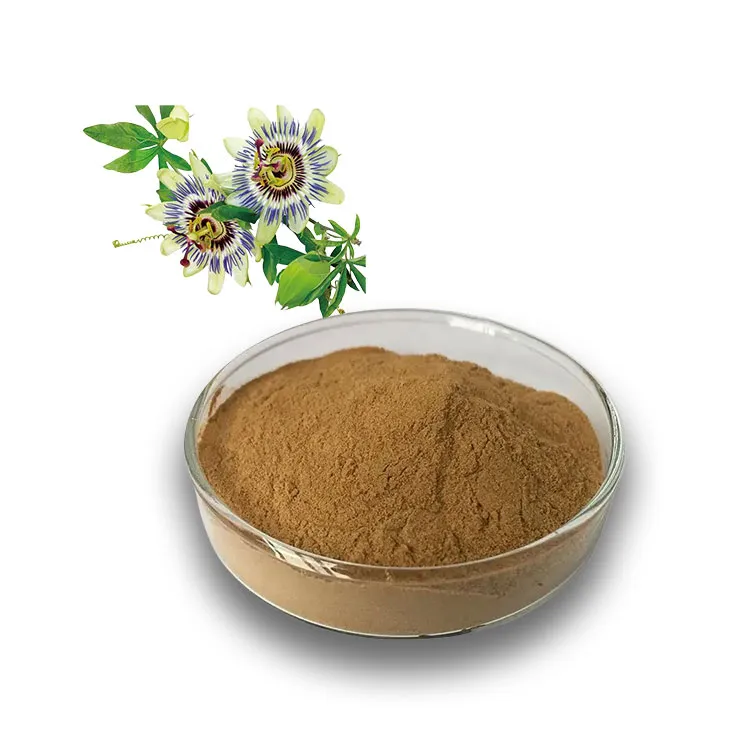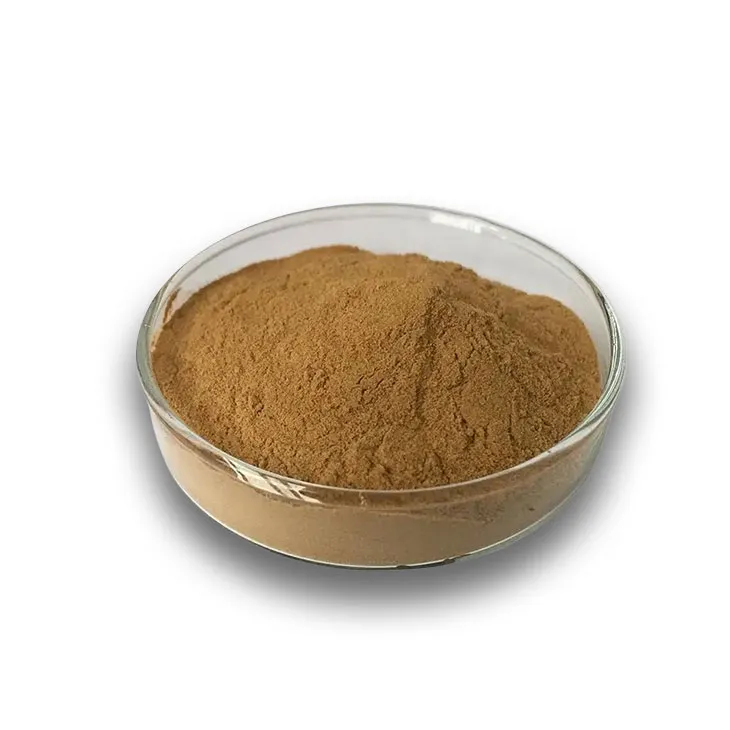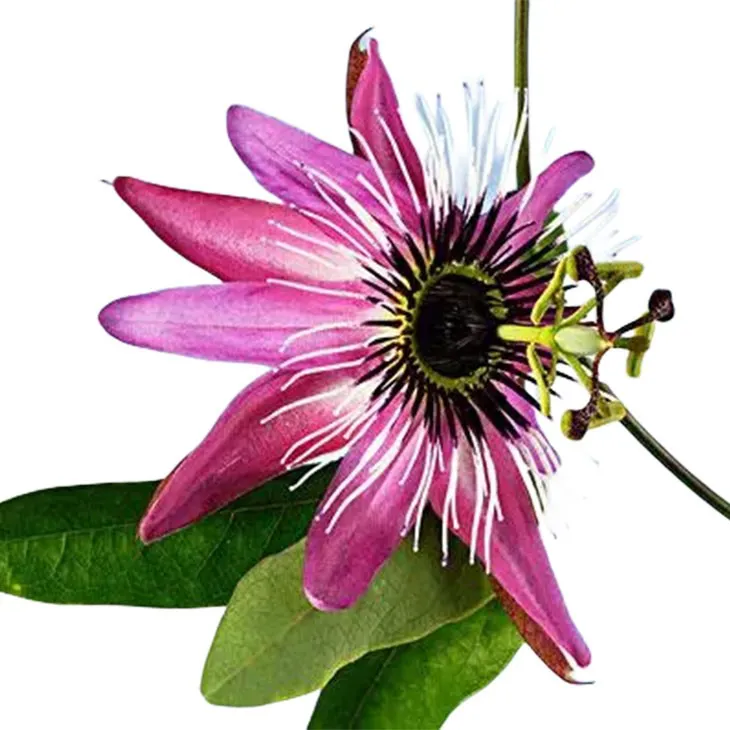- 0086-571-85302990
- sales@greenskybio.com
The process of extracting passionflower active ingredients from passionflower extract.
2024-11-28

1. Introduction
Passionflower, with its rich chemical composition, has been widely studied for its potential health benefits. The extraction of active components from Passionflower Extract is not only a scientific pursuit but also has significant implications for various industries, such as pharmaceuticals, nutraceuticals, and herbal remedies. Accurate and efficient extraction methods are crucial to obtain high - quality active components.

2. Harvesting and Drying of Passionflower
2.1 Harvesting
The first step in the process of extracting active ingredients from passionflower is the proper harvesting of the plant. Passionflower should be harvested at the appropriate time to ensure the maximum content of active components. This usually involves careful observation of the plant's growth cycle and maturity indicators. For example, the flowers should be fully developed but not overly ripe or damaged.2.2 Drying
Once harvested, passionflower needs to be dried. Drying helps to preserve the plant material and prepare it for the extraction process. There are different drying methods available, such as air drying, oven drying, and freeze - drying. Air drying is a more traditional method, which is cost - effective but may take longer. Oven drying can be more controlled in terms of temperature and humidity, but care must be taken not to overheat the plant material, which could potentially damage the active components. Freeze - drying is a more advanced method that can better preserve the chemical structure of the active components, but it is also more expensive.
3. Ultrasonic - Assisted Extraction
3.1 Principle of Ultrasonic - Assisted Extraction
One of the key extraction methods for passionflower active components is ultrasonic - assisted extraction. Ultrasonic waves play a crucial role in this process. When ultrasonic waves are applied to the passionflower sample in the solvent, they create cavitation bubbles. These bubbles grow and then collapse violently, generating high - intensity shock waves and micro - jets. These physical forces can effectively disrupt the cell walls of passionflower, which are barriers to the release of active components. By breaking down the cell walls, the active components are more easily released into the solvent, increasing the extraction efficiency.3.2 Selection of Solvent
In ultrasonic - assisted extraction, the choice of solvent is also very important. Different solvents have different solubilities for passionflower active components. Commonly used solvents include ethanol, methanol, and water - based solvents. Ethanol is often a popular choice because it has a relatively good solubility for many active components, and it is also relatively safe and easy to handle. Methanol has a high solubility for some components but is more toxic. Water - based solvents are considered more environmentally friendly, but they may not be as effective in dissolving all types of active components. The choice of solvent may also depend on the specific active components to be extracted and the intended application of the extract.3.3 Parameters of Ultrasonic - Assisted Extraction
There are several parameters that need to be optimized in ultrasonic - assisted extraction. These include ultrasonic power, extraction time, and solvent - to - sample ratio. The ultrasonic power affects the intensity of cavitation and thus the efficiency of cell wall disruption. However, too high a power may also cause degradation of some active components. The extraction time should be long enough to ensure sufficient extraction of active components, but if it is too long, it may lead to the extraction of unwanted impurities. The solvent - to - sample ratio determines the concentration of the active components in the solvent and also affects the extraction efficiency. Optimal parameters need to be determined through experimental studies for different passionflower samples and extraction purposes.
4. Centrifugation
4.1 Purpose of Centrifugation
After the ultrasonic - assisted extraction process, centrifugation is an important step. The main purpose of centrifugation is to separate the liquid phase, which contains the active components, from the solid debris. During extraction, the passionflower sample is broken down, and there are solid particles such as cell fragments and insoluble substances in the extract. Centrifugation uses centrifugal force to separate these components based on their different densities.4.2 Centrifugation Conditions
The centrifugation conditions, such as rotational speed and centrifugation time, need to be set appropriately. A higher rotational speed can generally achieve better separation, but it may also cause some active components to be adsorbed onto the solid particles or the centrifuge tube wall. The centrifugation time should be sufficient to ensure complete separation, but not overly long to avoid unnecessary energy consumption. For Passionflower Extract, typical rotational speeds may range from 3000 - 10000 rpm, and the centrifugation time may be from 10 - 30 minutes, depending on the nature of the sample and the extraction process.
5. Purification of Active Components
5.1 Crystallization
After separation by centrifugation, the active components are still in a mixture. Crystallization is one technique that can be used to obtain pure active components. Crystallization is based on the principle that different substances have different solubilities at different temperatures. By carefully controlling the temperature, concentration, and other factors, the active components can be made to crystallize out of the solution while impurities remain in the solution. For example, if a particular active component has a lower solubility at a certain low temperature, the solution can be cooled slowly to allow the component to form crystals. The crystals can then be separated from the mother liquor by filtration or other means.5.2 Membrane Separation
Another purification method is membrane separation. Membrane separation uses semi - permeable membranes to separate different components based on their molecular size or other properties. For passionflower active components, membranes with different pore sizes can be selected depending on the size of the active components and the impurities to be removed. For example, ultrafiltration membranes can be used to remove larger molecules such as proteins and polysaccharides, while nanofiltration membranes can be used to further purify the active components by removing smaller impurities. Membrane separation has the advantages of being a continuous process, having low energy consumption, and being able to maintain the activity of the active components.6. Quality Control of Extracted Active Components
6.1 Chemical Analysis
To ensure that the extracted active components from Passionflower Extract meet the high - quality requirements for various applications, quality control is essential. Chemical analysis is one of the main methods for quality control. This includes techniques such as high - performance liquid chromatography (HPLC), gas chromatography (GC), and mass spectrometry (MS). HPLC can be used to separate and quantify different active components in the extract based on their different retention times in the chromatographic column. GC is more suitable for analyzing volatile components in the extract. MS can be used in combination with HPLC or GC to identify the chemical structures of the active components.6.2 Biological Activity Testing
In addition to chemical analysis, biological activity testing is also important. The ultimate goal of extracting passionflower active components is to utilize their potential health benefits. Biological activity testing can evaluate the antioxidant, anti - inflammatory, and other biological activities of the extracted components. For example, antioxidant activity can be measured by methods such as DPPH radical scavenging assay, and anti - inflammatory activity can be evaluated by in vitro cell culture models or in vivo animal experiments. Only when the extracted active components pass both chemical analysis and biological activity testing can they be considered of high quality for applications in pharmaceuticals, nutraceuticals, and herbal remedies.7. Conclusion
The extraction of active components from passionflower extract is a complex but well - regulated process. From the initial harvesting and drying of passionflower to the final purification and quality control of the active components, each step plays a crucial role. Ultrasonic - assisted extraction, centrifugation, crystallization, membrane separation, chemical analysis, and biological activity testing are all important components of this process. By following these scientific and technological processes, high - quality passionflower active components can be obtained, which can be widely used in various fields to provide potential health benefits to humans.
FAQ:
What are the main active ingredients in passionflower?
Passionflower contains various active ingredients such as flavonoids, alkaloids, and glycosides. These components are believed to have different physiological effects, which contribute to its potential applications in pharmaceuticals, nutraceuticals, and herbal remedies.
Why is ultrasonic - assisted extraction used in the process?
Ultrasonic - assisted extraction is used because ultrasonic waves can disrupt the cell walls of passionflower. This disruption makes it easier for the active components to be released into the solvent more efficiently compared to traditional extraction methods, thus enhancing the extraction yield.
What is the role of centrifugation in the extraction of passionflower active ingredients?
Centrifugation plays a crucial role in separating the liquid phase that contains the active components from the solid debris after extraction. It helps to purify the extract by removing unwanted solid particles, which is an important step towards obtaining the active components in a relatively clean form.
How do crystallization and membrane separation work to obtain pure active components?
Crystallization works by causing the active components to form crystals under specific conditions such as temperature and concentration changes. These crystals can be separated from the remaining liquid, resulting in a more pure form of the active components. Membrane separation, on the other hand, uses a semi - permeable membrane to separate different components based on their size, charge, or other properties. It allows the passage of certain components while retaining others, thereby purifying the active components.
What are the quality requirements for passionflower active components in different applications?
In pharmaceutical applications, the active components need to meet strict purity, potency, and safety standards. For nutraceuticals, in addition to safety, they should have consistent quality in terms of the content of active ingredients. In herbal remedies, the active components should be of sufficient quality to provide the claimed health benefits, which may include factors such as proper identification, minimal contamination, and appropriate potency.
Related literature
- Extraction and Characterization of Bioactive Compounds from Passionflower: A Review"
- "Optimization of Passionflower Active Ingredient Extraction: Recent Advances"
- "The Role of Passionflower Active Components in Herbal Medicine: A Comprehensive Study"
- ▶ Hesperidin
- ▶ Citrus Bioflavonoids
- ▶ Plant Extract
- ▶ lycopene
- ▶ Diosmin
- ▶ Grape seed extract
- ▶ Sea buckthorn Juice Powder
- ▶ Fruit Juice Powder
- ▶ Hops Extract
- ▶ Artichoke Extract
- ▶ Mushroom extract
- ▶ Astaxanthin
- ▶ Green Tea Extract
- ▶ Curcumin
- ▶ Horse Chestnut Extract
- ▶ Other Product
- ▶ Boswellia Serrata Extract
- ▶ Resveratrol
- ▶ Marigold Extract
- ▶ Grape Leaf Extract
- ▶ New Product
- ▶ Aminolevulinic acid
- ▶ Cranberry Extract
- ▶ Red Yeast Rice
- ▶ Red Wine Extract
-
Tinospora cordifolia extract
2024-11-28
-
Golden Seal Extract
2024-11-28
-
Maitake Mushroom Extract
2024-11-28
-
Polygonum multiflorum extract
2024-11-28
-
Grapefruit Seed Extract Powder
2024-11-28
-
Mulberry leaf Extract
2024-11-28
-
Ginger Extract
2024-11-28
-
Withania Somnifera Extract
2024-11-28
-
Lemon Balm Extract
2024-11-28
-
Propolis Extract Powder
2024-11-28





















